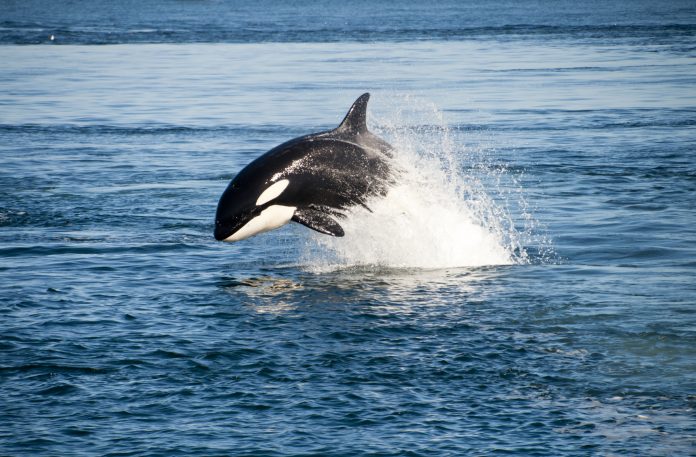Scientists are using biologging devices to track animal behaviour in order to build conservation strategies for killer whales, and other endangered animals
Understanding wild animal behaviours is vital to species conservation plans, but tracking animals can be expensive, dangerous, and often impossible with animals that move underwater or into unreachable areas.
What is bio-logging?
Ecologists need to understand wild animal behaviours in order to conserve species, so scientists have invented bio-logging devices which can be attached to animals and capture information about movement, breathing rate, heart rate, and more.
Retrieving an accurate picture of what a tagged animal does requires statistical analysis, especially when it comes to animal movement, and the methods statisticians use are consistently evolving to make full use of the data sets.
Understanding behavioural patterns
Researchers at the Institute for the Oceans and Fisheries (IOF) and the UBC department of statistics are looking to understand the behaviours of northern resident killer whales by improving statistical tools useful for identifying animal behaviours that can’t be directly observed.
So, the research team sought to improve a statistical tool based on what is called a hidden Markov model, which is helpful for understanding and observing animal movement datasets.
These tags can collect data continuously, so the researchers are left with a large number of data points taken fractions of seconds apart, and traditional Markov models and statistical methods struggle to interpret such high-frequency information. Therefore, this requires the more advanced Markov model, as proposed in the study.
The team found some undiscovered northern resident killer whale behaviours when using the enhanced hidden Markov models. The whale they used to develop the model preferred to save energy by gliding through the water when making deep dives, and when it was closer to the surface, it moved more actively, accelerating faster and ‘fluking’ its tail more often.
Understanding these diving patterns is fundamental for whale conservation to help researchers learn how much energy the whales require to sustain themselves.
Evan Sidrow, a doctoral student in the department of statistics and the study’s lead author, said: “The thing we really tackled with this paper was trying to get at some of those fine-scale behaviours that aren’t that easy to model.
“It’s a matter of finding behaviours on the order of seconds—maybe 10 to 15 seconds. Usually, it’s a matter of a whale looking around, and then actively swimming for a second to get over to a new location. We are trying to observe fleeting behaviours, like a whale catching a fish.
“Traditional hidden Markov models break down at very fine scales. That’s because there’s structure in the data you can’t capture using the basic type of hidden Markov model. We’re trying to capture it with this model—we’re trying to account for this ‘wigglyness’ that a traditional hidden Markov model wouldn’t be able to account for.”
The method’s applications extend far beyond whale movement data
Sidrow added: “It could be applied to pretty much any animal movement data. If you’re tagging animals and you want to understand fine-scale behaviours, then this method that could be useful—even for things like the flapping of birds’ wings.”
Biologging could even prove useful in areas outside of ecology, such as determining when machines are going to break by classifying when the parts inside of them are vibrating abnormally.
Dr. Auger-Méthé, senior author of the study and an assistant professor in the department of statistics and the Institute for the Oceans and Fisheries, said: “Using our methods to detect when the animals are catching prey and to model their energy expenditure will be key to understanding the differences between these neighbouring whale populations.
“The paper offers many ‘building block’ solutions that can be used together or independently. In essence, we are providing a toolbox to researchers using high-frequency movement data, and other similar high-frequency time series.”
The study and data taken by the ecologists is one of the first steps on the road to fully understanding why the southern resident killer whales are not faring as well as their northern counterparts.
The researchers state that the next goal is understanding when the whales are capturing prey and applying the models to both northern and southern resident killer whale populations to see how they behave differently.











